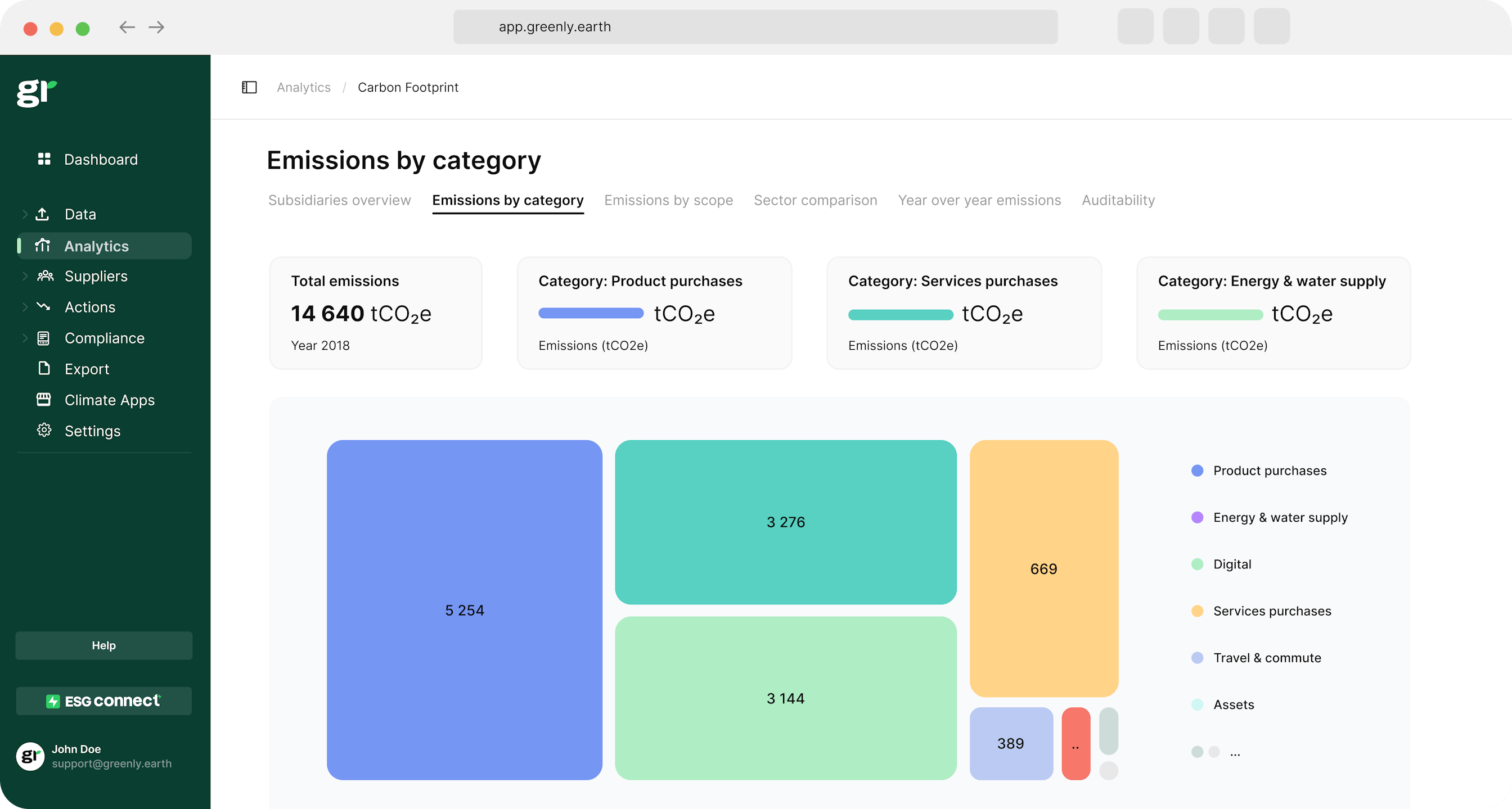ESG / CSR
Industries
Let's Make Halloween More Sustainable!
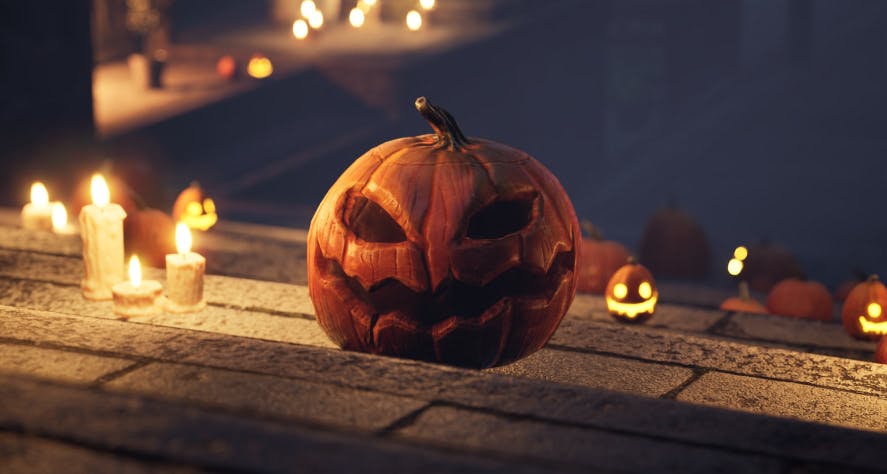


Halloween is one of the most coveted fall holidays in the U.S. every year: as Americans of all ages decorate their homes, host parties, go trick or treating with their kids, or get dressed up in costumes for work or school.
It’s the time of year where pumpkins become even more prominent on every corner, and CVS and Target are covered in witches hats, spider webs, and other halloween decor just waiting to be bought for a halloween party.
No country in the world celebrates Halloween quite like Americans, yet ironically – Americans often don’t know the detrimental environmental impact of Halloween themselves.
Whether it be by reducing your food waste with eco-friendly halloween decorations, halloween treats, or shopping at a local thrift store to make your own costume – there are lots of ways to make spooky season mores sustainable.
👉 Why is Halloween so bad for the planet, and how can Americans change their Halloween habits to be more environmentally friendly?
What is Halloween?
Halloween, celebrated every October 31st, originally penned as, "All Hallow’s Eve” – is an old tradition that originated in Ireland, the United Kingdom, and the north of France from an ancient tribe called, “The Celts”.
Where does the tradition of a Halloween party come from?
👉 Halloween originated in Europe, and took some time before it became popular in North America. The first colonists weren’t dedicated to celebrating All Hallow’s Eve because of their Protestant beliefs, which didn’t adhere to evil spirits or ghosts.
However, Halloween picked up in regions of the U.S. like the Mid-Atlantic and the South. The combination of the original Halloween in European and American Indians helped to create many of the rituals Americans use to celebrate Halloween with today: like holding “play parties” where they would pretend to be something they weren’t, events to celebrate the autumn seasons harvest – like the infamous pumpkin used to symbolise Halloween today, share scary stories, and read one another’s future in the style of a Fortune Teller.
How did Halloween become what is is today?
By the second half of the 19th century, even more people came to the land now known as U.S. – especially many Irish that had to flee due to the Irish Potato Famine. These new Irish settlers helped to make Halloween what it is today by encouraging the celebration of All Hallow’s Eve to the initial colonisers. Slowly, Halloween became what it is today – with carving pumpkins, festive gatherings, costume wearing, trick-or-treating and candy eating working their way into the annual traditions in the colonies over time.
From there, as industrialisation began and Americans started to culminate their materialistic and commercial values, and a little help from being under the influence of Target – that’s how the U.S. got to celebrating Halloween the way that they do now.
Halloween is no doubt festive and fun, but has what Halloween has become today made the planet cringe in exchange?

How do Americans celebrate Halloween?
Today, Americans celebrate Halloween by having parties (from work gatherings to full-blown college parties), getting dressed in costumes, and most of all: trick or treating – a tradition where kids walk around the neighborhood and go door to door saying, “trick or treat” and ask for candy. This is derived from the tradition of the Celts trying to ward off the scary spirits, where in present day – children are emanating the evil spirits and threatening to either give them a piece of candy, or face the malicious consequences.
Is an eco-friendly Halloween popular in the U.S.?
👉 Americans tend to go all out for Halloween: purchasing boat-loads of pre-packaged candy, plastic Halloween themed cutlery, pumpkins for carving, internal and external house decorations, and a new costume every year.
Therefore, most Americans don't think about buying eco-friendly halloween candy, using locally grown pumpkins, cardboard boxes, or wearing a specific costume to allign with zero waste to create their spooky atmosphere for Halloween – especially when there are kids involved.
How do the newfound American Halloween traditions impact the environment?
Why is Halloween so bad for the environment?
Halloween is scary, but it’s even scarier for the environment. Even the classic symbol for Halloween, a carved pumpkin – is abysmal for landfill.
Environmental impact of pumpkins
💡 In the U.S. alone, 900,000 tonnes of pumpkins produced will be tossed in the garage instead of being used for pumpkin carving or pumpkin pie for Thanksgiving.
Basically, most of the pumpkins Americans are picking up at the pumpkin patch will ultimately be wasted. In fact, according to the USDA – the waste created by pumpkins totals to a whopping 1.3 billion pounds of waste.
👉 What’s even worse, is that pumpkins aren’t just wasted in the end, but that they require an exorbitant amount of water to grow in the first place – needing up to 304 fluid ounces (2.375 gallons) of water per hectare for water irrigation, sowing, and the final harvest.
Some states are bigger on pumpkin waste than others, with Illinois being the first of the top six states producing pumpkin – totaling at a harvest worth nearly 16,000 acres in 2021. Given this data, it can be presumed that Illinois used an alarming 127,200 megalitres last year for their pumpkin patches. Other top states that create massive amounts of pumpkin waste include Indiana, California, Michigan, Texas, and Virginia.
Plastic usage during Halloween & lack of eco-friendly halloween candy
As Halloween usesmore plastic than paper bags, and given that eco-friendly candy has yet to be the norm – plastic wrappers are a massive issue during Halloween.
While this serves as a year round plastic consumption problem for the U.S. the truth is – a large portion of these plastic packaged candies are purchased during Halloween in the U.S., with a quarter being sold during Halloween season.
💡 Plastic is the main culprit behind the monstrous carbon footprint of Halloween: as next to everything used for Halloween is made out of plastic or uses plastic in some way – such as traditional packaged Halloween candy, indoor and outdoor Halloween decorations, trick or treating bins, and even the costumes purchased from retailers like Target, Walmart, or Party City.
Impact of Halloween decorations & costumes
👉 The problem with Halloween costumes is that they’re mostly made out of polyester – in fact, most of the costumes are made completely out of polyester. As polyester is the most produced synthetic fiber in the world, it contributes immensely to textile waste. For instance, nearly 40 million tonnes of polyester was produced around the world back in 2015 – and Halloween just adds to that alarming number.
Annually, 500,000 tonnes of plastic fibers flood our oceans – which is equivalent to the amount of 50 billion plastic bottles.
Halloween has even extended to American’s pets, too – with Americans having spent an alarming $500 million on costumes for their pets last Halloween. Many of these costumes are worn once and then never worn again, meaning that Halloween also contributes to the environmentally harmful ideals of fast fashion.
💡 A potential solution to implement sustainable living into your halloween celebrations this season is to swap costumes with friends. By sharing costumes you each wore the year before, you can avoid the use of excess materials in our landfills and make your Halloween more green.
Halloween uses a lot of plastic, which isn’t good for the environment – buy why?
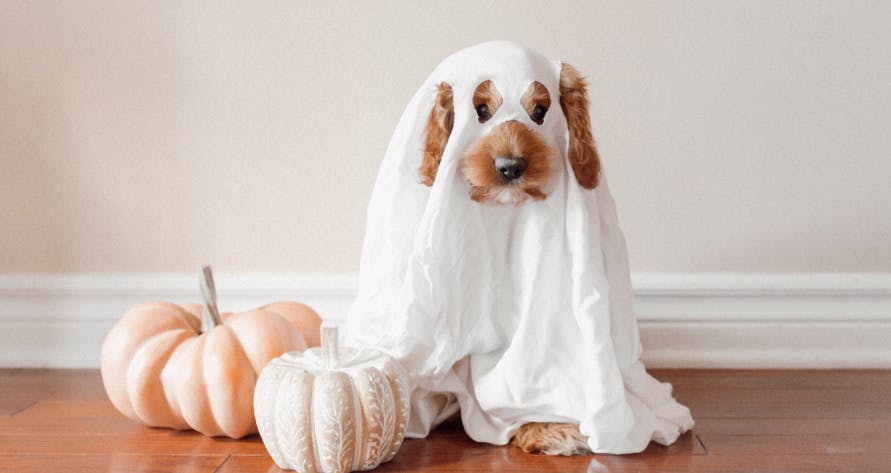
Why is plastic bad for the planet?
Plastic is even worse for the planet than you may think. Plastic has proven itself to be a culprit in the grand scheme of global warming – as the production of plastic contributes to excessive greenhouse gasses that provoke further climate change, and also create colossal amounts of waste.
Impact of plastic on Halloween
Plastic is popular for things like Halloween as it can easily be molded into any shape desired – such as for skeleton decorations or pumpkin trick-or-treating baskets. It’s easy, lightweight, and often inexpensive – but the biggest problem with plastic is that it isn’t biodegradable… and Halloween uses a lot more plastic than other holidays like Christmas or Thanksgiving.
👉 It turns out that the scariest part of Halloween might be how much plastic is used. In the United States, almost 12 million pounds of textile created for Halloween costumes are wasted – as many costumes are thrown away after use.
You may think that your Halloween costumes, decorations, and used candy wrappers are easily recyclable – but the problem is that most plastic doesn’t even get recycled to begin with, or it’s placed in the wrong recycling bin and ends up in landfills instead. In addition to the fact that recycling management is questionable at the current moment, most candy wrappers from Halloween candies can’t even be recycled to begin with. Turns out, the parents often ridiculed for trying to offer healthy snacks weren’t just looking out for trick-or-treater’s health – but also the planet’s.
Is there a way to move forward with your Halloween plans without sacrificing the planet’s journey to sustainability?
Here are some of the benefits to a having a more sustainable halloween:
| Benefit | Description |
|---|---|
| Reduced Costs | Reusing costumes and decorations lowers the need for new purchases, making the party more affordable. |
| Less Waste | Recycling materials and repurposing items minimises waste from single-use products. |
| Lower Carbon Footprint | Eco-friendly choices like energy-efficient lighting and local foods reduce environmental impact. |
| Community Awareness | Hosting sustainable events raises awareness and promotes eco-consciousness among attendees. |
| Support for Local & Ethical Brands | Choosing local, ethical, and eco-friendly products supports sustainable industries. |
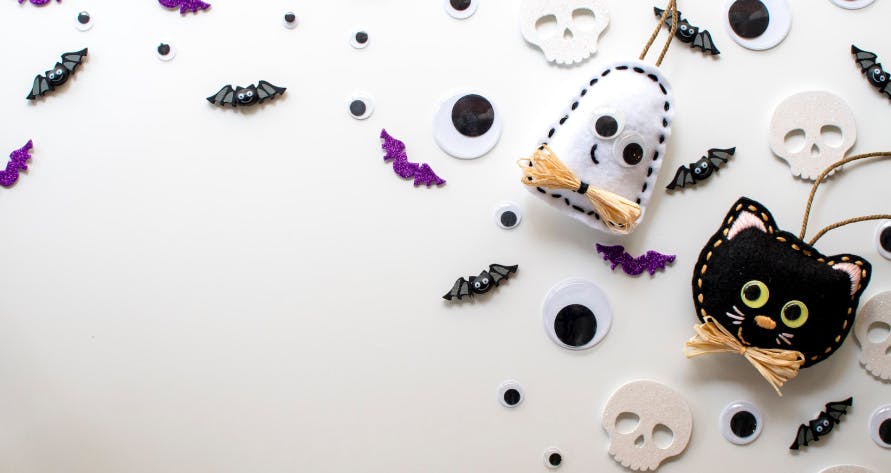
How can you have a sustainable Halloween?
If you want to make your Halloween more sustainable, the first thing you have to do is break-down all of your usual Halloween activities and then alter them one by one.
Sustainable Halloween costumes
For instance, the first thing many people think of when it comes to Halloween is their costume. Most people don’t repeat their Halloween costumes – ever.
Try to make a Halloween costume that you’ll enjoy wearing every few years. In other words, instead of opting to pick a brand new costume every year – start making a rotation of costumes, so that the costumes never get thrown away.
If possible, try to avoid buying costumes made out of plastic at all costs – and opt for a DIY costume instead, such as dressing up as a well-known superstar or T.V. show character. These kinds of costumes can often be created with what’s already in your closet. This also prevents the peril many end up in every Halloween: wondering what to dress up as!
👉 By rotating your costumes, you’ll save time and money from not needing to plan a new costume every year – and reduce your Halloween carbon footprint at the same time.
Eco-friendly Halloween decorations & costumes
Decorating for fall and Halloween are a big deal in the United States, and aren’t likely to go away any time soon. I never decorated for Halloween, and now living in France – it isn’t even an option to find a plethora of Earth-toned foliage covered tablecloths or plastic pumpkins to line my counter with.
However, it didn’t mean that I didn’t make my home feel like fall – or any season for that matter. Instead, I fill my home with practical items that I’m going to use for the season: like butternut squash, fall-themed soaps and lotions, or candles. This way, my fall decor isn’t just for decoration – but actually gets used throughout the season as well.
👉 If you must incorporate something spooky for Halloween – try to make DIY decorations like cut-out paper ghosts and spiders.
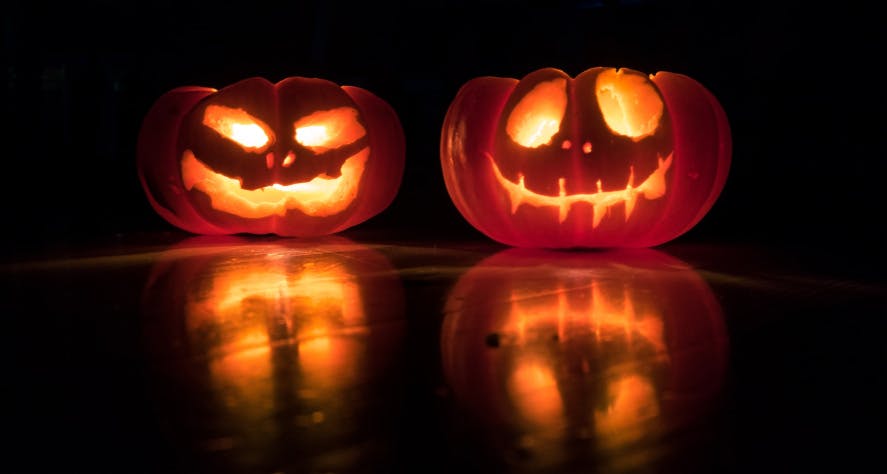
Carve pumpkins with sustainable ideas in mind
People often buy whole pumpkins for Halloween solely for craving, and throw away “the guts”, or the part that can actually be eaten – away without a second thought.
💡 However, pumpkin doesn’t have to go to waste – and can be used in multiple fall-themed dishes as well as recipes like pumpkin pasta or pumpkin bread that are good no matter what time of year it is.
The best part is that pumpkin freezes well – so even if you have no idea what to do with it the week of Halloween or carving pumpkins, you can store pumpkin in your freezer for up to three months. If you’re a baker, pumpkin can also serve as an excellent, less sweet substitute for bananas in baking.
As for the candy, one of the most environmentally detrimental components of Halloween – it’s hard for trick-or-treating, but if you’re hosting a party – try to make your own Halloween treats. This way, you’ll reduce your plastic consumption while still keeping the Halloween theme.
What about Greenly?
If reading this article about the environmental impact of Halloween and how to make Halloween sustainable has made you interested in reducing your carbon emissions to further fight against climate change – Greenly can help you!
Greenly can help you make an environmental change for the better, starting with a carbon footprint assessment to know how much carbon emissions your company produces.
Click here to learn more about Greenly and how we can help you reduce your carbon footprint.
